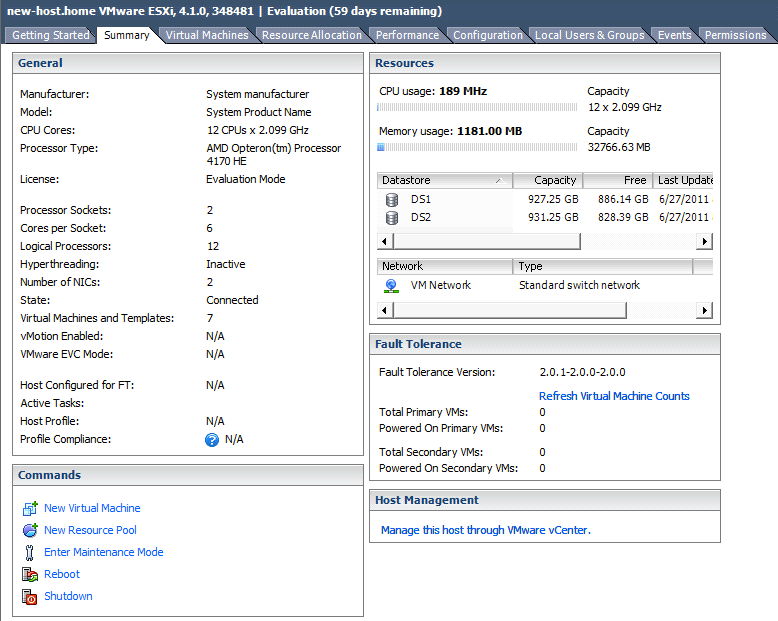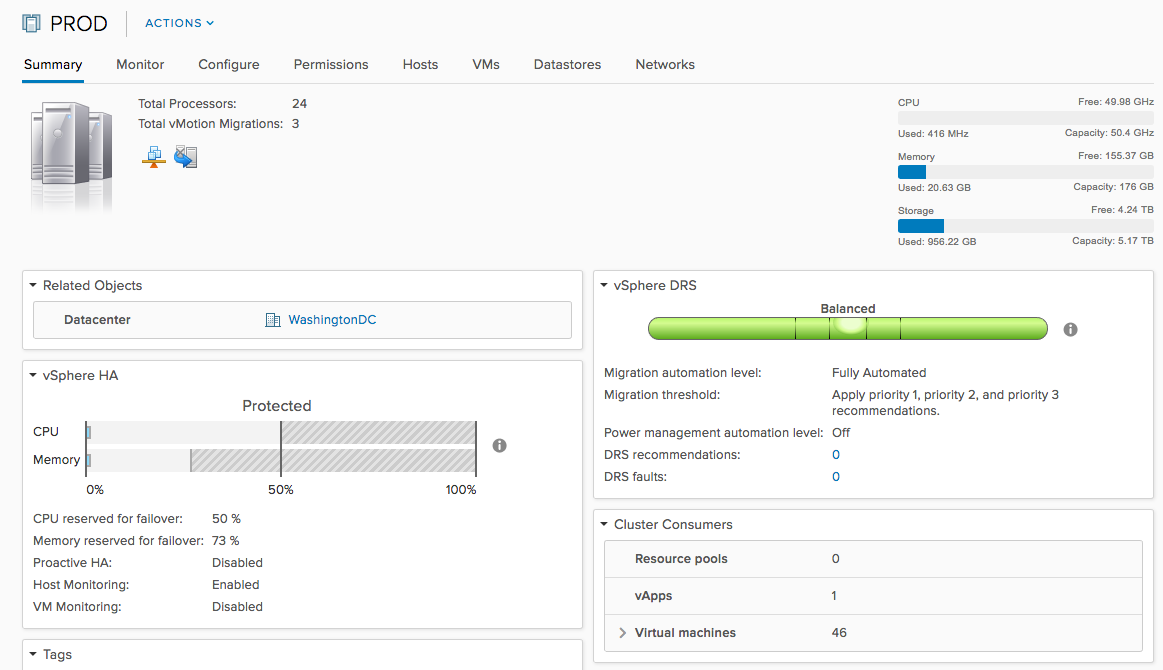Burke's Home Lab
Since I’m preparing to write a short series of articles on my recent Home Lab purchases, I figured I should preface those articles with a little history on my current hardware…
During the summer of 2011 around June/July, I wanted to have a home environment to install, configure, and test things - you know, the typical techie Hands-On environment. My requirements were as follows:
- Try to keep costs down
- Try for quiet equipment
- Minimize power consumption
This article will describe the original purchase and progression of the lab.
Server Build

- Dual CPU support
- Must support up to 128 GB of memory so I have room to grwo
- Must have remote management capability
- Must have at least two NICs
After a bit of review, I decided on the ASUS KCMA-D8 Dual Socket C32 ($289.99 Newegg.com) and the remote management add-on board +ASMB4-iKVM ($67.25 Amazon.com). This selection met all of my requirements and fortunately the dual GB on-board NIC had no issues with ESXi 4.1. I opted for 2X Noctua NH-U9DO A3 ($76.99/ea Newegg.com) for CPU Cooling. Next up, how much can I spend on server memory, yikes! A bit expensive for now, so I started with 32GB of DDR3 1333 ($503.92 Newegg.com). For the case and power supply, I went with: Case: Antec Sonata Elite ($89.99 Newegg.com) Power Supply: Antec EA-430D ($59.99 Amazon.com) This screenshot was taken prior to adding shared storage.
Storage and Networking
Since the lab is small, but planning to expand soon to another server, I wanted to be sure I had enough network ports to support:
- 3 Nics for each server (planning for 2 servers eventually) - 1 for remote mgmt, 2 for ESXi
- 2 Nics for NAS
- 1 Uplink to Router
I also wanted the ability to do advanced networking if I ever got around to it so a managed server was a must. My research lead me to this fanless 10 port switch: Cisco SG300-10 ($235.28 Amazon.com)
As far as shared storage was concerned, I could have built my own but decided to go with an appliance and ended up deciding on the QNAP TS-459 Pro II ($965.38 Amazon.com)(Loaded with 4 2TB drives configured for RAID 5 $80/ea Amazon.com).
Overall Results
I boot the system to ESXi on a USB stick that is plugged directly in to the motherboard. I had a pair of 1TB drives ($60/ea from Amazon.com) inside the server for local storage - don’t really need them due to the NAS.. The system overall is VERY QUIET - my son’s XBOX 360 is louder than this server. I have all this gear plugged into an APC Back-UPS XS 1000. With about a dozen VMs running, the APC reports approx 200W load.
Lab Growth

Continuing the growth, I bought additional memory to bump up one of the servers to the max 128GB :)
There have been no issues with this hardware running ESXi 4.1 all the way through the recently released ESXi 6.5. I’ve been able to run vCloud Director 1.x and 5.x, various builds of vCO and vRO, vCAC & vRA, vR Ops, and NSX.
Current state of this lab is:
1 Host: Windows 10 Pro with VMware workstation running my Domain Controller as 1 VM and an ESXi 6.5 host with 48GB of memory allocated as another VM
1 Host: Pure ESXi 6.5 With the growing interest in vSAN as well as my luck at VMworld 2016 Barcelona Hackathon my next few articles will be around my lab update to include a vSAN Cluster so stay tuned

